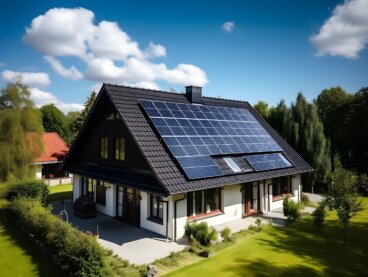Transparent Glass Floors: Innovation and Modernity

The flooring in our homes is traditionally made from wood or ceramic. This is because they’re conventional and robust resources. However, we have another option for functional, durable, and beautiful floors: transparent glass floors.
On more than one occasion we’ve all considered making a change to our flooring. By applying a component that modifies the structure of our homes, it’ll open it up to more aesthetic potential.
If we look for alternatives to the norm, we can incorporate other elements to guarantee originality. However, we must carefully consider what we want, the objectives we want to achieve, and the appearance we want to create.
What possibilities does glass have from a structural point of view?
Generally, when it comes to construction, we think of stone and cement. Equally, we’ve also become used to seeing opaque walls in much the same way as floors–they’re in the background without directly contributing to the decor.
Why not change this dynamic and find another more interesting option? Glass can be a great choice! It’s not a question of using it just for aesthetics as it can also serve as a practical structural material.
On more than one occasion we’ve all walked upon a viewing platform, balcony, or corridor with a transparent or semi-transparent glass floor. This generates a somewhat surprising visual effect and, in turn, arouses our curiosity and enthusiasm because it’s completely innovative.

Incorporating transparent glass floors in our homes
It’s probably a little risky to incorporate these types of resources in our home interiors. As such, we should remember not to abuse this material and overload our homes with it. It should appear sporadically and with an anecdotal presence. Let’s look at some examples:
- Homes are configured as appropriate spaces to demonstrate our personalities and lifestyles. Using glass helps us to this end by modernizing and transmitting different sensations. In addition, it generates much more transparency.
- In public places, such as in the hospitality sector and shopping malls, glass floors are often installed to expose archaeological remains or simply to show something interesting. Many commercial buildings decide to place lighting there too, in order to create special effects.
- In train stations and airports, glass floors enjoy an even greater prominence. Typical of these types of environments, glass floors energize the environment and enrich it in a positive way. We can consider this as an appropriate concept to promote decorative renovation .
- Glass floors aren’t only for flat, solid floors! They’re also used for stairs. Thick glass is a very resistant material and it actually offers durability that’s almost the same as stone.

How can we use glass floors at home?
The next question we must ask ourselves is how can we use this material for flooring at home? We’re not really used to having glass floors. In fact, it’s quite the opposite because as we already mentioned, ceramic and wood are the most common types.
If we have an opportunity to install a glass floor, we can do this, either indoors, on the terrace, or in the garden. However we choose to use it, it’s a unique opportunity to enrich the whole home. We can leave a lower floor visible, or use it as the main floor and even place plants on or underneath it.
For example, corridors and passageways are great places for glass floors. If a room underneath this is visible, even better! In this instance, we can introduce indirect lighting that can also come in handy.
Transparent glass floors: impression and elegance
Once we’ve discovered the potential for its placement, we must assess another aspect: the sensations it generates. Typically, transparent glass floors are impressive, although some people may experience vertigo when they walk on them.
Either way, there’s no denying that they generate amazement and transmit elegance. In addition, the internal image of the home is enriched and a feeling of spatiality is gained. As we’ve mentioned above, transparent glass floors modernize a home and bring it back to life.
All cited sources were thoroughly reviewed by our team to ensure their quality, reliability, currency, and validity. The bibliography of this article was considered reliable and of academic or scientific accuracy.
- Gilliatt, Mary: El libro de la decoración, Círculo de lectores, 1987.








